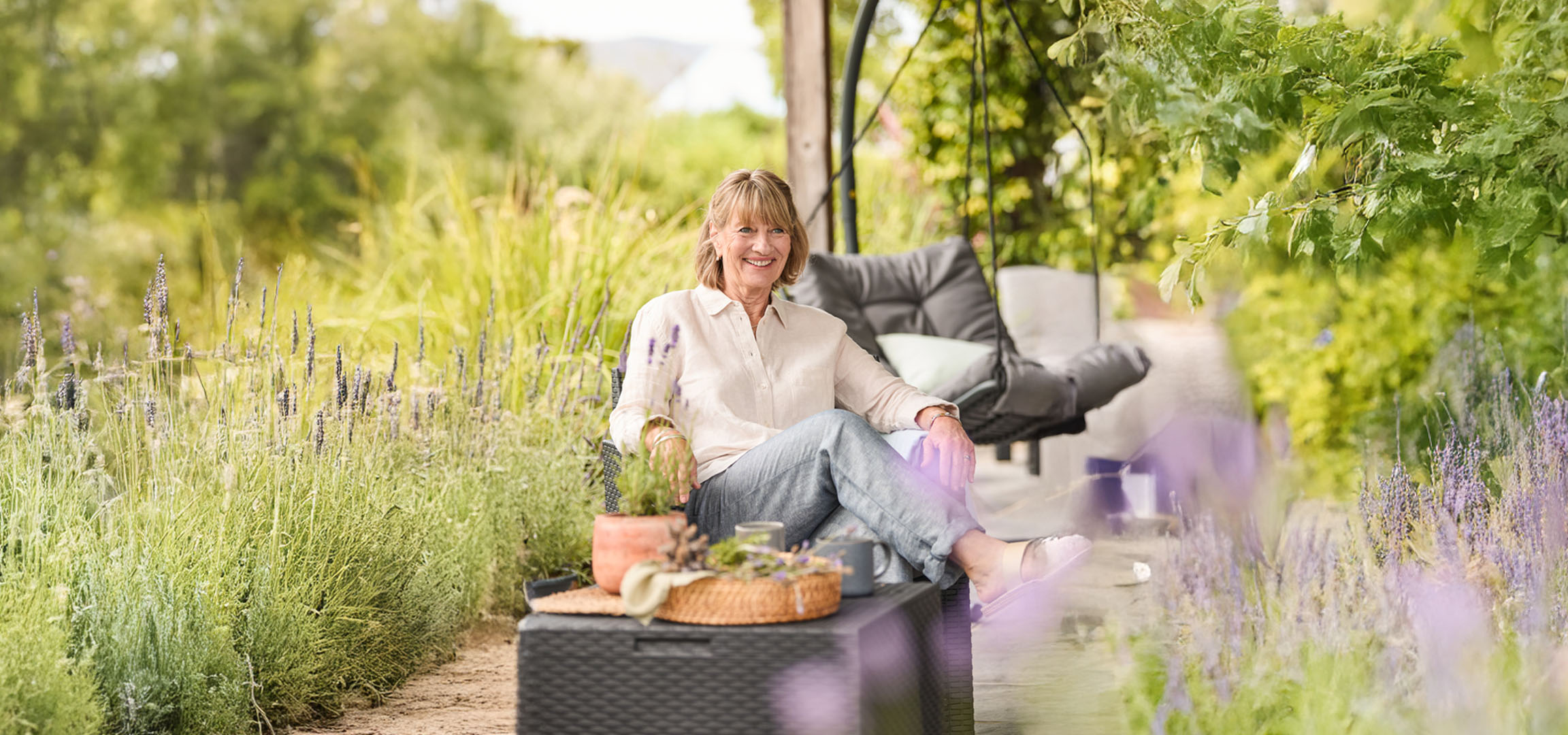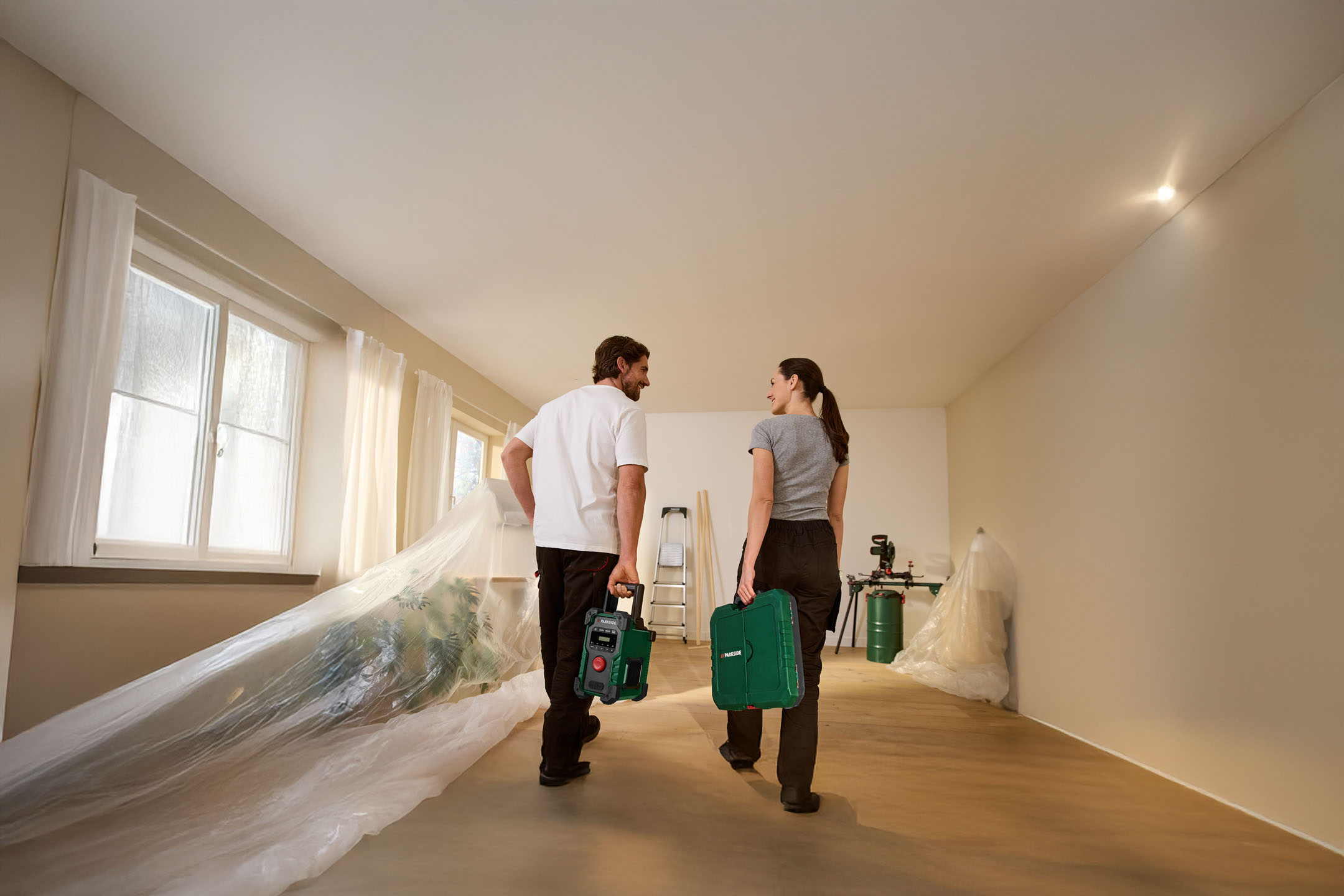How to look after your garden furniture?
With the first warm rays of sunshine, the desire for new balcony and garden furniture grows. The choice of materials and styles is vast, from rattan garden furniture with a woven surface, to metal garden furniture or traditional wooden furniture. But remember, when choosing your garden furniture, It's not just about the look, but also about the maintenance.
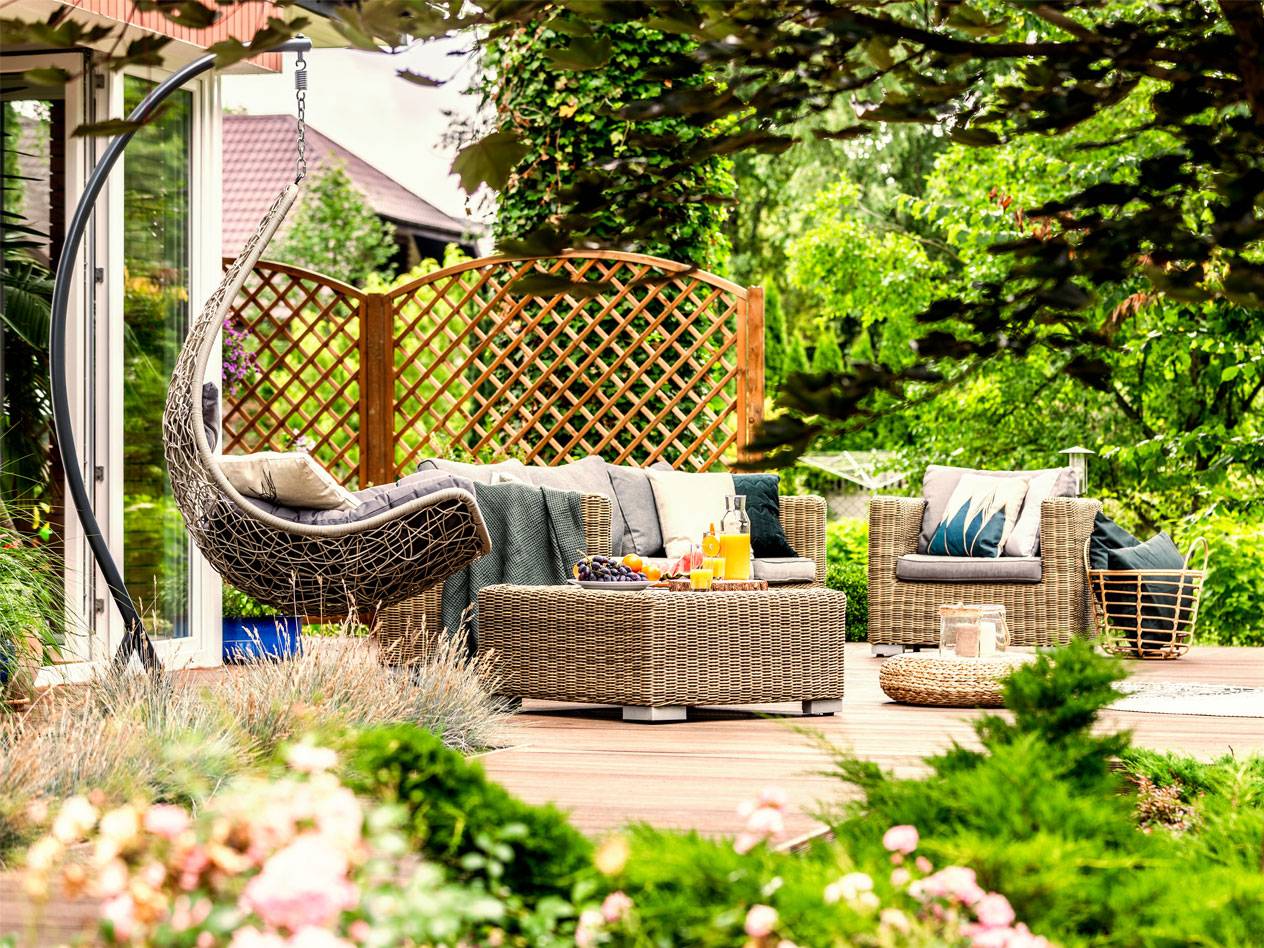
Ratten balcony and garden furniture:
Rattan garden furniture uses weather-resistant polysynthetics with a rattan weave look. Real rattan is made from palm fibers and was often used for chairs and furniture, especially in the past. However, since it is less durable and less weather-resistant, the unique rattan look has been imitated for synthetic fiber garden furniture. Polyrattan garden furniture is lightweight, stylish, and easy to care for: dirt can be easily removed with a damp cloth. This material is ideal for lounge furniture and garden furniture sets as it's easy to move. However, polyrattan garden furniture can be less durable than materials such as stainless steel or wood.
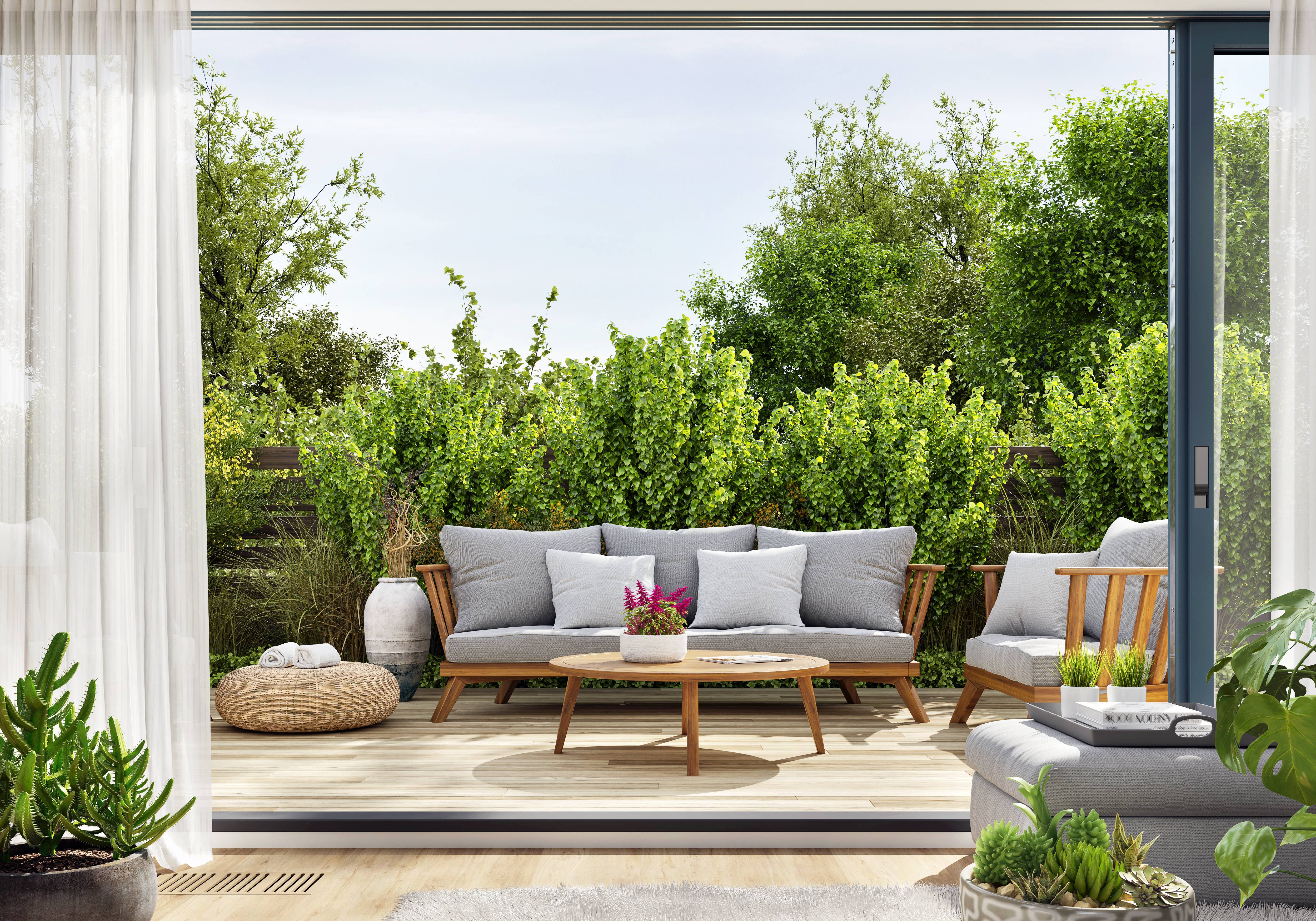
Wooden balcony and garden furniture:
Wood is extremely robust, natural, and high-quality. Each type of wood – from teak to acacia – has its own unique qualities. Garden furniture made of wood or teak fits perfectly into the natural surroundings of the garden. The individual grain of the wood and the high fiber density makes it the perfect choice for garden benches and similar outdoor furniture, designed to enhance the garden or balcony year-round. This wooden furniture is stable, but can be heavy. Add cushions for comfortable seating and to create a stylish look. In general, wood should be resealed regularly with oils or varnishes to make it last longer. While wooden garden furniture requires a little more attention in terms of maintenance, with proper care and the right oils, it can last for decades and countless winters.
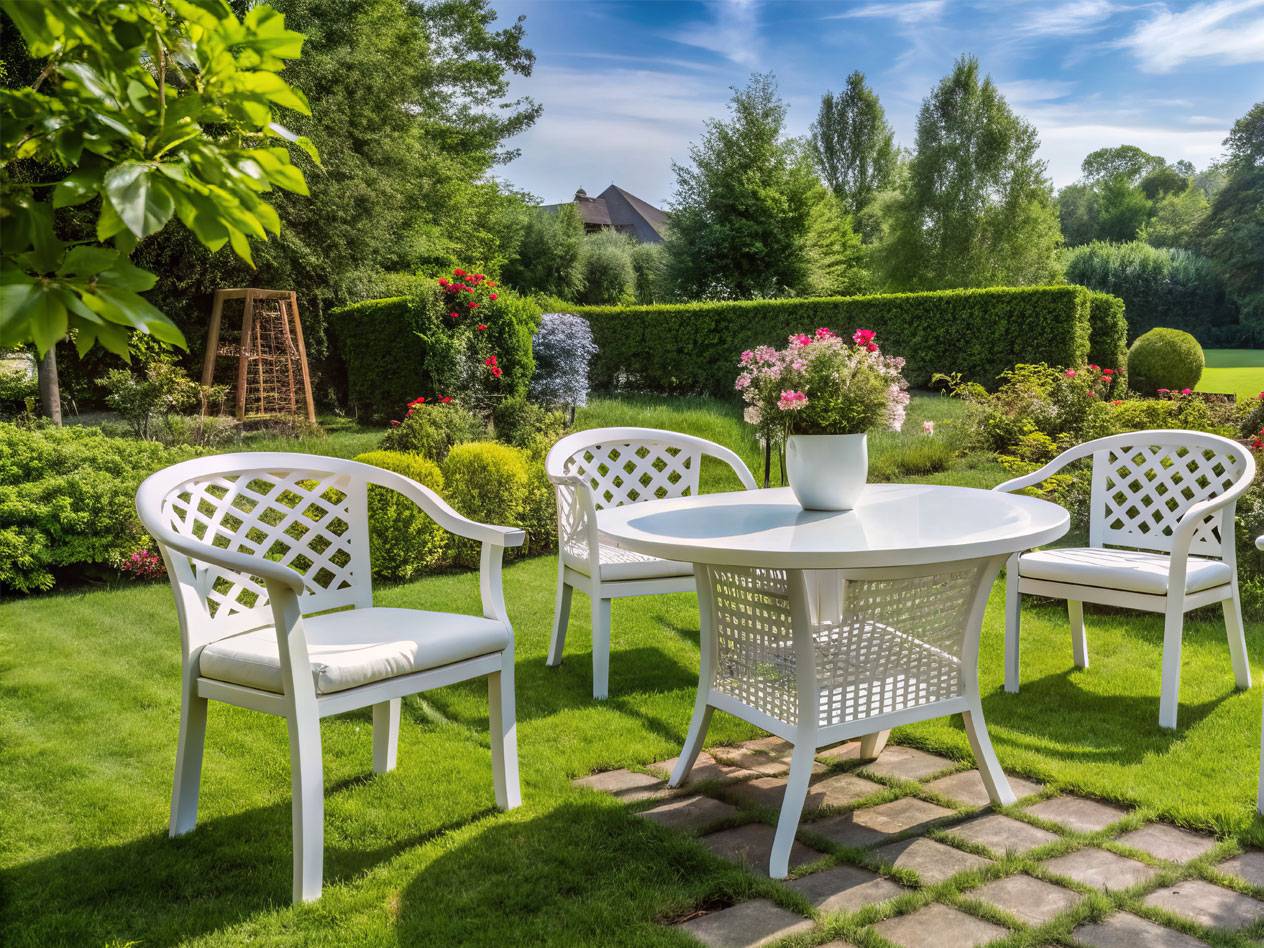
Plastic balcony and garden furniture:
Plastic garden furniture is practical, versatile, mobile, and affordable. Plastic has proven itself particularly suitable for balcony furniture. Many plastic garden chairs and loungers can be quickly folded, moved, and stored away. As with all plastic products, it is highly weather and light-resistant. It's overall lifespan and durability are lower than those of materials such as metal or wood though. All you need to care for plastic is a little water, a brush or cloth, a garden hose, or other simple cleaning aids.
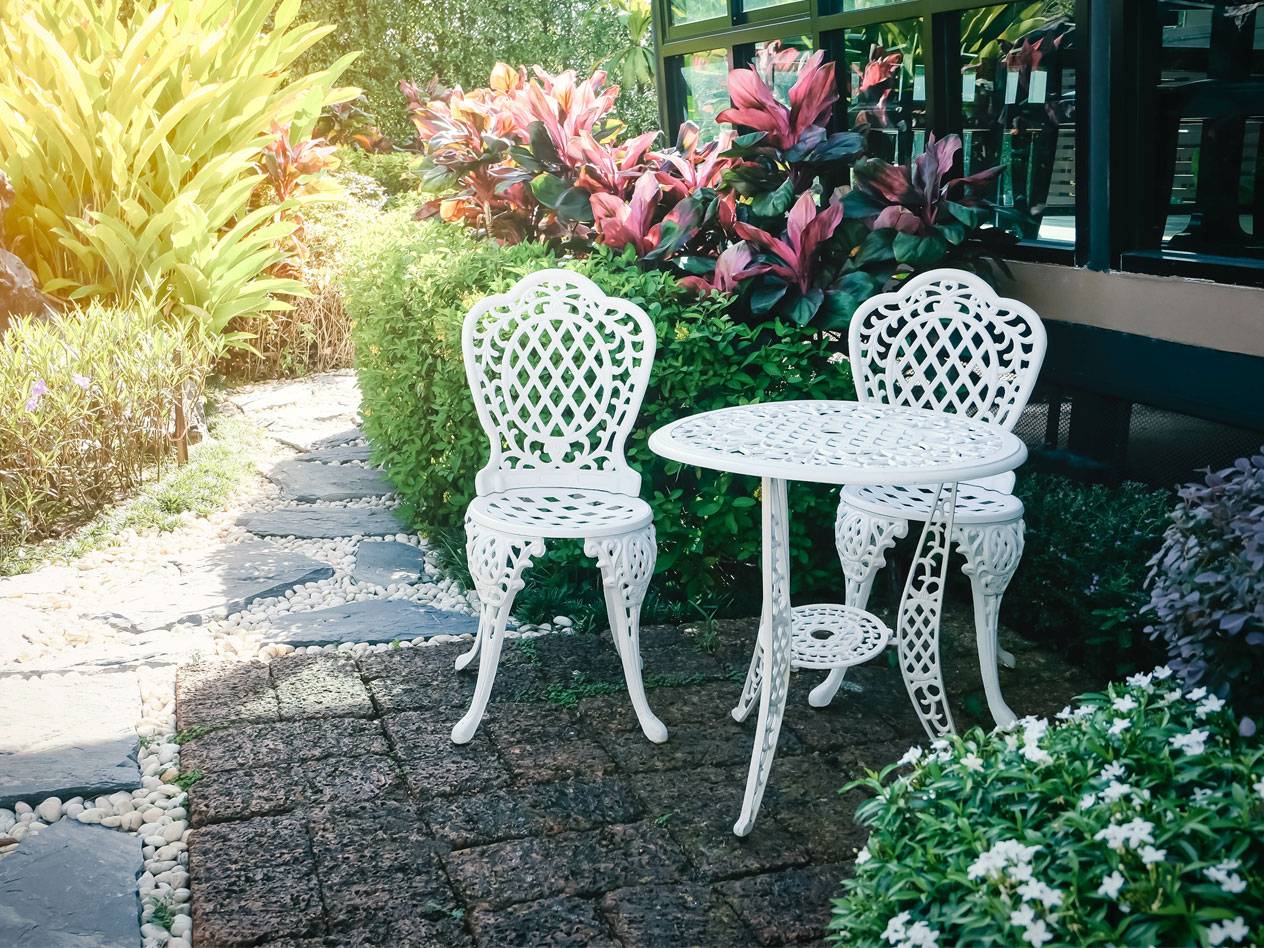
Metal balcony and garden furniture:
Metal garden furniture is a popular choice for seating areas with a vintage flair. A modern patio lounge area also looks great with metal. Garden tables made of steel or stainless steel are extra stable and extremely robust. Depending on the finish and material processing, metal garden furniture doesn't require much maintenance. After a few years, it may be worth repainting them as some metals can rust in the wet weather.
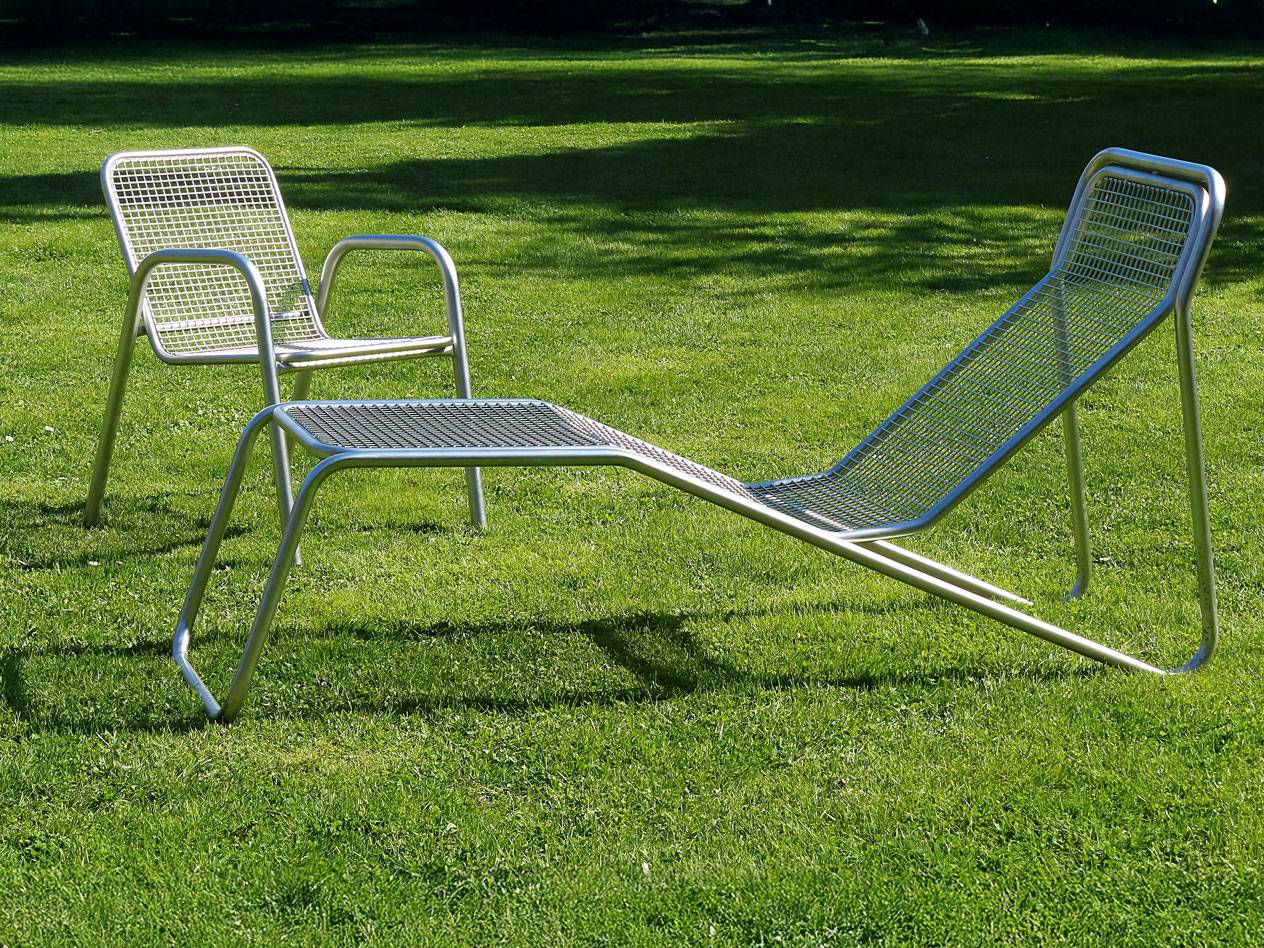
Aluminum garden furniture:
Lightweight metal aluminum is an ideal partner for stylish combinations with other materials such as wood, glass, or polyrattan. Garden furniture sets with aluminum frames combine the durability of metal with the beautiful appearance of wood and other materials. The overall weight is reduced without sacrificing impressive design. Aluminum is ideal as a frame for garden loungers, which need to be stable and comfortable, yet still mobile. However, the load-bearing capacity of aluminum garden furniture is limited. However, cleaning is just as easy as with plastic.
How should garden furniture be stored over the winter?
All garden furniture should ideally not be left outside all year round, due to the weather temperature changes and amount of rainfall, which can cause damage.
- Try to store it in a dry, well-ventilated place outside of the season – wood, in particular, should not be exposed to large temperature fluctuations.
- Large, permanently installed garden furniture made of wood, teak, or steel – such as garden benches – should be placed under a suitable protective plastic cover by autumn at the latest. However, good ventilation and proper care before covering is also important.
- Before storing, thoroughly clean with the right care and cleaning aids, check for damage to the aluminum, the paint, or weathered wood, and repair if necessary.
Tips for caring for garden furniture:
Material | Special Feature | Care | Maintenance Over Winter | Look | Weight |
|---|---|---|---|---|---|
Polyrattan | Versatile and stylish | Easy to care for | Keep lightly protected outdoors | Stylish / modern | Light |
Wood | High quality and robust | Needs more maintenance | Keep covered or in a shed / garage | Timeless / natural | Heavy |
Metal | Stable and very durable | With paint, easy to care for | Keep lightly protected outdoors | Modern | Heavy |
Aluminium | Light and stable | Easy to care for | Keep covered or in a shed / garage | Subtle / versatile | Light |
Plastic | Affordable and versatile | Easy to care for | Keep lightly protected outdoors | Practical | Light |
Depending on the material, proper care for garden furniture should be carried out at the beginning and end of the season. Clean as follows:
- Wooden garden furniture should be cleaned with a mild soap solution and a sponge. Then wipe with clean water and allow to dry.
- Plastic garden furniture can be cleaned with household cleaners or dish soap and water. Wiping dry after cleaning will prevent water stains.
- Metal garden furniture can be cared for in the same way as plastic versions. Dry polishing is a particularly good option here.
